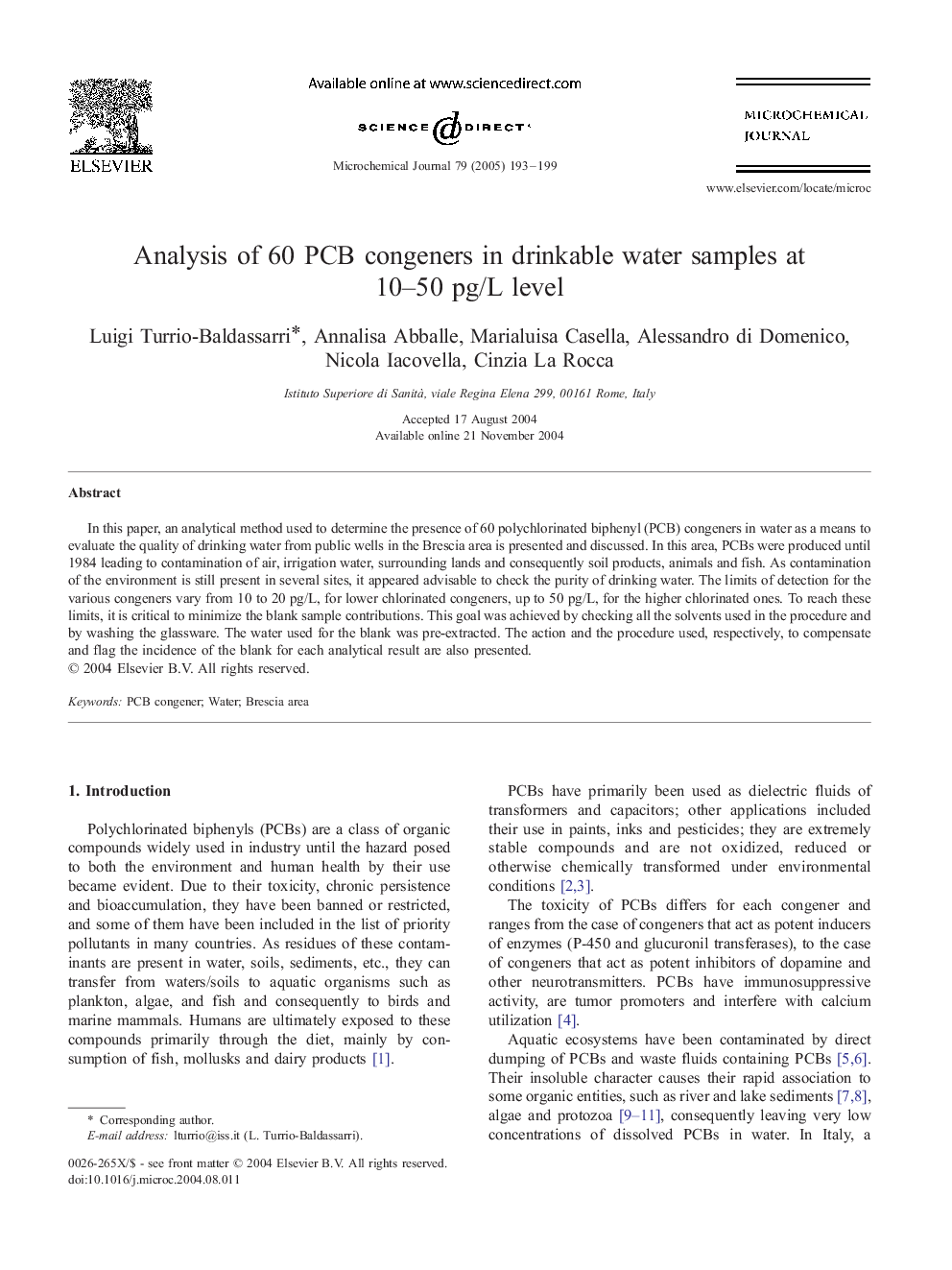| Article ID | Journal | Published Year | Pages | File Type |
|---|---|---|---|---|
| 9755036 | Microchemical Journal | 2005 | 7 Pages |
Abstract
In this paper, an analytical method used to determine the presence of 60 polychlorinated biphenyl (PCB) congeners in water as a means to evaluate the quality of drinking water from public wells in the Brescia area is presented and discussed. In this area, PCBs were produced until 1984 leading to contamination of air, irrigation water, surrounding lands and consequently soil products, animals and fish. As contamination of the environment is still present in several sites, it appeared advisable to check the purity of drinking water. The limits of detection for the various congeners vary from 10 to 20 pg/L, for lower chlorinated congeners, up to 50 pg/L, for the higher chlorinated ones. To reach these limits, it is critical to minimize the blank sample contributions. This goal was achieved by checking all the solvents used in the procedure and by washing the glassware. The water used for the blank was pre-extracted. The action and the procedure used, respectively, to compensate and flag the incidence of the blank for each analytical result are also presented.
Keywords
Related Topics
Physical Sciences and Engineering
Chemistry
Analytical Chemistry
Authors
Luigi Turrio-Baldassarri, Annalisa Abballe, Marialuisa Casella, Alessandro di Domenico, Nicola Iacovella, Cinzia La Rocca,
